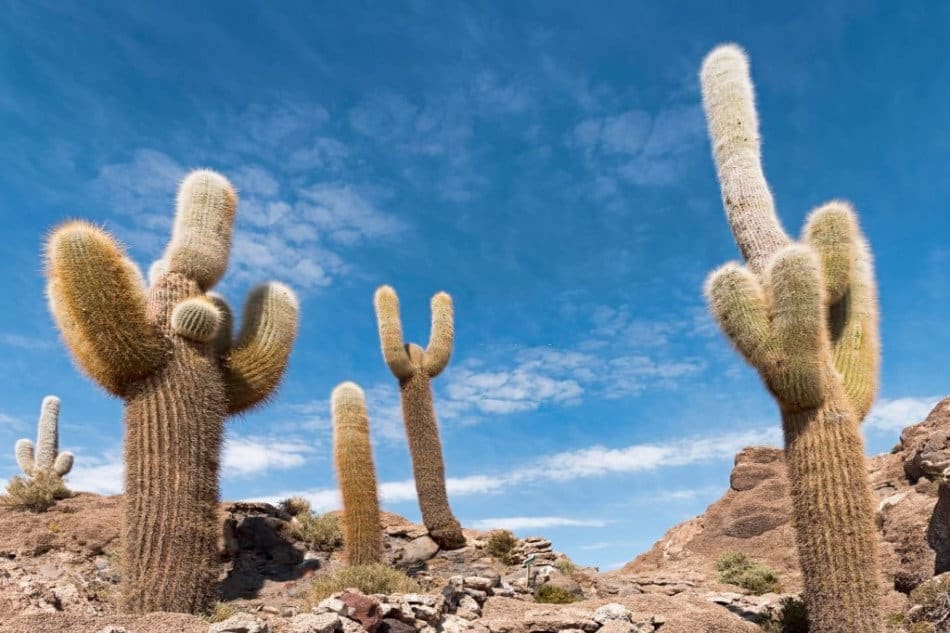Cacti are a remarkable group of plants, renowned for their ability to thrive in arid environments while displaying stunning forms and colors. Among the vast array of cactus species, tall cacti stand out for their impressive stature and dramatic presence. Whether used as focal points in landscaping or as striking indoor specimens, tall cacti captivate both the casual observer and the horticulture enthusiast alike. This article delves into a selection of tall cactus types, allowing you to discover your favorite, each accompanied by vivid imagery to showcase their unique beauty.
As we explore these mammoth plants, we will highlight their key characteristics, aesthetic appeal, and ideal growing conditions, ensuring that you are well-informed and inspired to incorporate them into your green space.
Majestic Saguaro: The Icon of the Southwest
The Saguaro cactus (Carnegiea gigantea) is perhaps the most iconic tall cactus species, celebrated for its distinctive silhouette that evokes images of the Arizona desert. These colossal giants can reach heights of up to 40 feet and live for over 150 years, making them a symbol of resilience and longevity. The Saguaro’s erect arms, which begin to grow when the cactus reaches around 50 years of age, add to its dramatic appearance, giving it an anthropomorphic quality that many find enchanting.
Beyond their impressive stature, Saguaros also produce stunning white blossoms that bloom in late spring, attracting a plethora of pollinators, including bees and bats. The fruits of the Saguaro, known as “saguaro fruit,” are not only edible but are celebrated in local Native American cultures, often harvested during the summer months to create traditional foods.
To cultivate a Saguaro cactus, one must replicate its native desert conditions: full sun exposure, well-draining soil, and minimal water. While they can take years to reach maturity, their slow growth rate is more than compensated by their timeless beauty.
The Towering Organ Pipe Cactus: Nature’s Architectural Marvel
Organ Pipe cactus (Stenocereus thurberi) is another towering specimen that exudes elegance. Characterized by its elongated morphological structure, this cactus can grow up to 20 feet tall and often displays an array of upright, columnar branches that create a visually striking display, particularly in moonlight. The collective form of the branches resembles a grand organ pipe, serving as inspiration for its name.
This species thrives in rocky, well-drained soils and, much like the Saguaro, requires full sunlight for optimal growth. During its blooming season, the Organ Pipe cactus produces fragrant white flowers that bloom nocturnally, inviting various night-time pollinators. This nocturnal blooming habit enhances its allure, as the blossoms emit an intoxicating fragrance, transforming a nighttime garden into a serene sanctuary.
Ethically sourced and cultivated, the Organ Pipe cactus is often found in commercial nurseries, allowing enthusiasts to bring a piece of the Sonoran Desert to their own homes. Its statuesque form and ethereal presence make it a favorite among landscape designers.
The Striking Cardon Cactus: A Behemoth of the Desert
Distinguished by its formidable height, the Cardon cactus (Pachycereus pringlei) is the largest cactus species in the world, reaching heights of up to 60 feet. Native to the Baja California Peninsula, the Cardon is a true testament to adaptability, thriving in harsh desert environments. Its thick, fleshy arms are reinforced with ribbed structures that store precious water, allowing it to withstand long periods of drought.
Cardon cacti display a unique greenish hue, adorned with spines that may be yellow or whitish, offering a striking contrast to the deep blue skies of its native habitat. The flowers, which typically bloom in the late afternoon and evening, are large and white, providing a stunning visual juxtaposition against the colorful desert backdrop.
To cultivate a Cardon cactus, one must ensure a well-drained soil mix and sufficient sunlight. Given their massive size, it’s imperative to plan for ample space when incorporating these botanical giants into a landscape.
Giant Cactus: The Ferruginous Carnegia
Another towering example is the Ferocactus genus, specifically the Ferocactus wislizeni, which is also known as the Fishhook barrel cactus. Although often seen as a stocky cactus, it can reach impressive heights, sometimes exceeding five feet under optimal conditions. The contrasting appearance of its stout body with its elongated spines lends a unique aesthetic. The spines can curl inwards like hooks, adding intrigue and texture to its form.
The Ferocactus blooms with vivid yellow, coral, or red flowers, often encircling the top of the cactus in an alluring crown. When planting, ensure that the environment mimics its native conditions of full sun and minimal watering for success.
Ecological Significance and Cultivation
Tall cacti play a vital role in their ecosystems, providing habitats and nourishment for various wildlife, including birds, insects, and mammals. As we explore these towering titans of the desert, it becomes clear that they contribute not only aesthetic appeal to gardens and landscapes but also ecological stability.
When considering incorporating tall cacti into your collection or landscape design, it is essential to honor their origins. This includes ensuring they are ethically sourced, planting them in suitable environments, and understanding their specific care requirements.
In conclusion, tall cacti represent more than just beautiful horticultural specimens; they embody the spirit of the arid environments from which they hail. As you are drawn to the majestic forms and vivid flowers of these plants, remember the delicate balance they maintain in their native ecosystems and the care and respect they demand in cultivation.





Leave a Comment